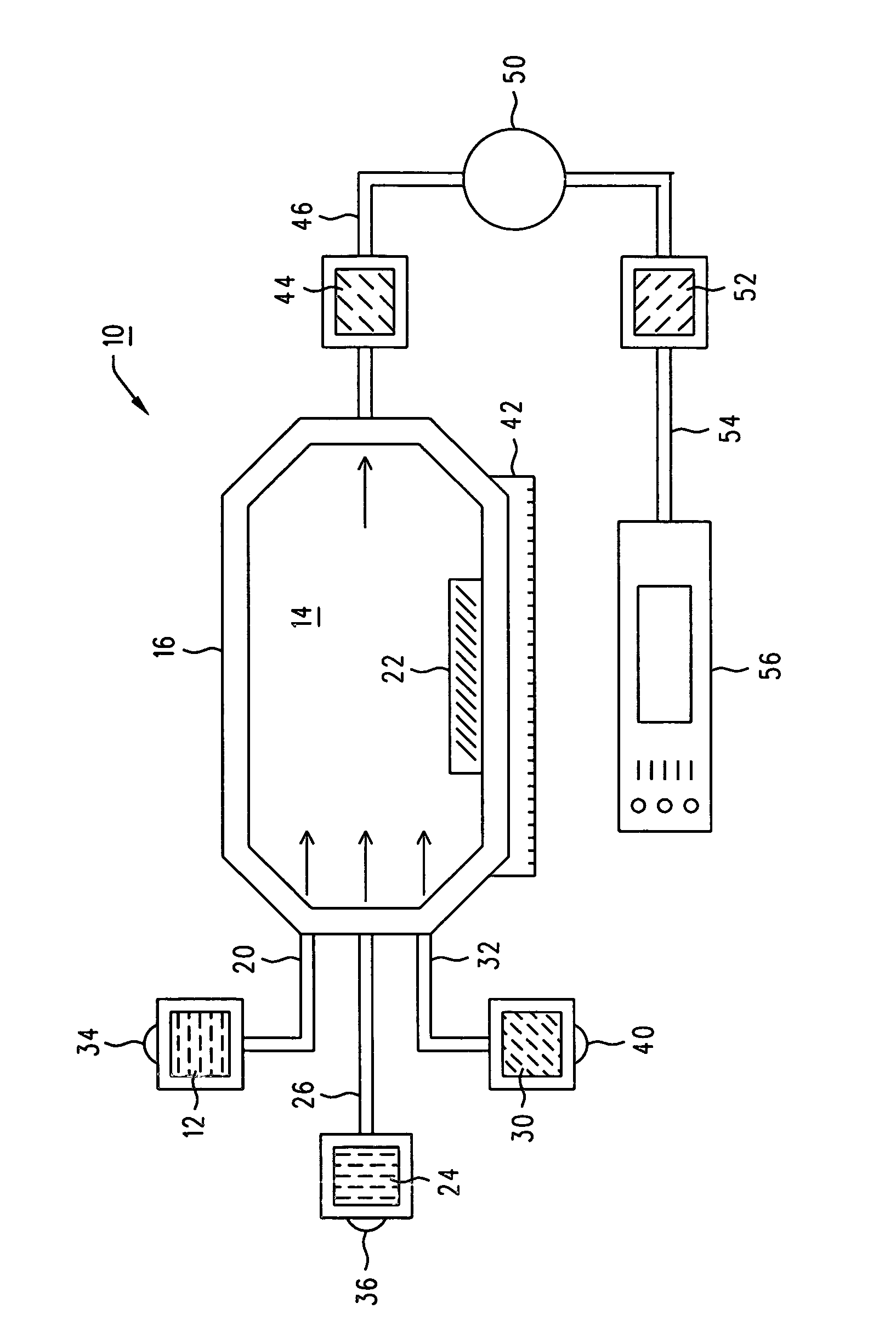Method for destroying halocarbon compositions using a critical solvent
a critical solvent and halocarbon technology, applied in the direction of chemical protection, etc., can solve the problems of halogenated hydrocarbons, adverse health conditions, environmental and health problems, etc., and achieve the effect of improving the solubility of reactants (including the chosen halocarbon) within the solvent, facilitating mass transport, and facilitating the effect of mass transpor
- Summary
- Abstract
- Description
- Claims
- Application Information
AI Technical Summary
Benefits of technology
Problems solved by technology
Method used
Image
Examples
Embodiment Construction
[0026]As previously discussed, the invention set forth herein involves a highly efficient process for dehalogenating a wide variety of halocarbons. The term “halocarbon” as used herein shall encompass a compound having at least one carbon atom and at least one halogen atom. Likewise, the terms “halocarbon”, “halocarbon composition”, “halocarbon material”, and “halocarbon compound” shall be considered equivalent and are used interchangeably herein. Of considerable importance within the general class of halocarbons discussed above are halogenated hydrocarbon materials (both of the aliphatic and aromatic variety). Halogens include the following chemical elements: fluorine (F), chlorine (Cl), bromine (Br), iodine (I), and astatine (At). Hydrocarbons traditionally encompass those materials which are constituted of only carbon and hydrogen. A combination of both materials (e.g. hydrocarbons+halogens) will result in the creation of halogenated hydrocarbons which, as noted above, are freque...
PUM
 Login to View More
Login to View More Abstract
Description
Claims
Application Information
 Login to View More
Login to View More - R&D
- Intellectual Property
- Life Sciences
- Materials
- Tech Scout
- Unparalleled Data Quality
- Higher Quality Content
- 60% Fewer Hallucinations
Browse by: Latest US Patents, China's latest patents, Technical Efficacy Thesaurus, Application Domain, Technology Topic, Popular Technical Reports.
© 2025 PatSnap. All rights reserved.Legal|Privacy policy|Modern Slavery Act Transparency Statement|Sitemap|About US| Contact US: help@patsnap.com



